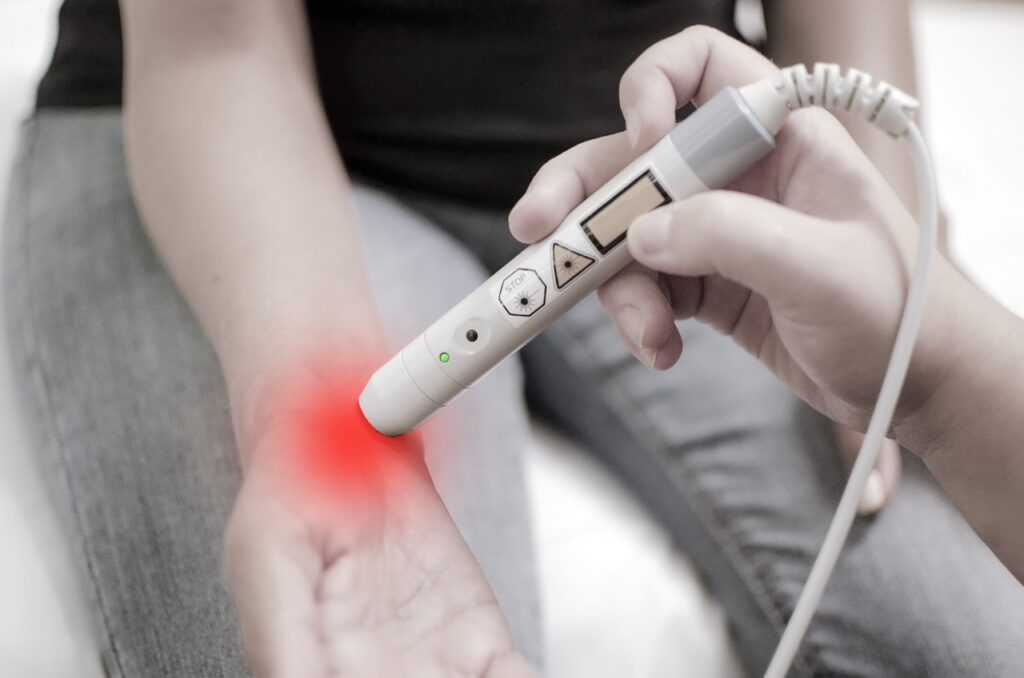Joint Pain 10 Natural Relief Tips That Work
If you suffer from joint pain, it is important to look for ways to combat this problem to improve your quality of life, with natural healthy habits
By adopting healthy habits and using natural remedies and alternative treatments.
it is possible to relieve pain and stay active. This article provides 10 useful tips for natural joint pain relief, ranging from changes in diet and exercise routine to the use of home remedies and alternative treatments. Learn how to combat joint pain and lead a healthier and happier life.
Joint pain can be a debilitating condition that affects many people around the world. It can be caused by a number of factors, including arthritis, injury, the natural wear and tear of aging, and other medical conditions. Fortunately, there are many things you can do to relieve joint pain and improve your quality of life. Here are some tips to help you deal with joint pain:
Regular exercise
Exercise is important for keeping your joints healthy and relieving pain. Find activities that you enjoy, such as walking, swimming, or yoga, and practice them regularly. It’s important to avoid activities that are too painful or too intense for your joints.
Healthy Eating
A balanced diet rich in nutrients can help strengthen your joints and relieve pain. Foods such as fruits, vegetables, fish, and whole grains are great choices. Avoid foods high in fat and sugar, which can worsen joint inflammation.
Physical therapy
Physical therapy can help relieve joint pain and improve movement. Your physical therapist may recommend specific exercises to strengthen your joints and relieve pain.
Applying Heat or Cold: Applying heat or cold to sore joints can help relieve pain. Try placing a hot water bag or ice on the affected joints for about 15 to 20 minutes.
Medication
If joint pain is severe, your doctor may prescribe medications to relieve pain and reduce inflammation. Options include non-steroidal anti-inflammatory drugs (NSAIDs) and steroid medications.
There are supplements that can help with pain management and maintenance
Joint Genegis is a nutritional supplement that contains a combination of ingredients that can help relieve joint pain and improve joint health. The main active ingredients are type II collagen, hyaluronic acid, and vitamin C.
get to know this revolutionary supplement
Collagen type II is a protein that is important for joint health, as it is the main component of cartilage. Cartilage is the tissue that lines the ends of bones in joints, protecting them from wear and tear and impact. Hyaluronic acid is a substance found naturally in the body that helps lubricate joints and reduce friction between bones. Vitamin C is an antioxidant that helps protect the body’s cells from free radical damage, and is important for collagen synthesis in the body.
The combination of these ingredients can help reduce joint pain, improve joint mobility and flexibility, and protect cartilage from wear and tear. However, it’s important to remember that nutritional supplements are not a substitute for conventional medical treatment and should not be used as the sole form of treatment
Complementary therapy

Some complementary therapies, such as acupuncture and massage, can help relieve joint pain. Talk to your doctor about what complementary therapy options are right for you.
Complementary therapies are treatments that can be used in conjunction with conventional medicine to help relieve joint pain. These therapies include acupuncture, massage, physical therapy, chiropractic care, meditation, and other techniques.
Acupuncture is a traditional Chinese medicine technique that uses fine needles to stimulate specific points on the body, which can help relieve pain and reduce inflammation in the joints. Massage can also help relieve pain and muscle tension in joints, and improve blood circulation and joint mobility.
Physical therapy is a therapy that uses specific exercises to strengthen muscles and increase joint flexibility, which can help reduce pain and improve joint function. Chiropractic is a technique that uses adjustments to the spine and other joints to improve alignment and reduce pain.
Meditation and other relaxation techniques, such as yoga, can help reduce stress and anxiety, which can aggravate joint pain. In addition, some complementary therapies include the use of nutritional supplements, such as omega-3 and glucosamine, which can help reduce inflammation and joint pain.
It’s important to remember that complementary therapies do not replace conventional medical treatment, but can be used in conjunction with it to help relieve joint pain. It is important to discuss the use of these therapies with your doctor and choose those that best suit your individual needs.
Maintain a healthy weight: Being overweight can make joint pain worse, especially in the knee and hip joints. Maintain a healthy weight to reduce pressure on the joints and relieve pain.
7 effective ways to use CBD to relieve joint pain
Avoid excessive activity
It’s important to avoid activities that put excessive pressure on sore joints. This can include lifting heavy weights or doing repetitive activities. If you must perform tasks that require physical exertion, use additional protection such as knee pads or lumbar belts.
Maintain a healthy weight
Being overweight can make joint pain worse, especially in the knee and hip joints. Maintain a healthy weight to reduce pressure on the joints and relieve pain.
Adequate rest
Lack of sleep or overuse of the joints can make the pain worse. Make sure you get adequate rest and avoid standing or sitting for prolonged periods of time.
Talk to your doctor
If joint pain persists or worsens, talk to your doctor. They can diagnose the underlying cause of the pain and recommend more effective treatments.
In summary, there are many things you can do to relieve joint pain. Maintain a routine of regular exercise, healthy eating, adequate rest, and avoid excessive activity. If pain persists, talk to your doctor for proper treatment.
Physical activity is important to keep your joints healthy and relieve pain
Exercise is an important part of joint pain management. It helps strengthen muscles and joints, relieve pain, and improve flexibility and movement. In addition, exercise can also help reduce stress, which can aggravate joint pain.
There are many physical activities that can be beneficial for people with joint pain. Walking is a great option because it is low impact and can be done anywhere. Swimming and stretching are also great for the joints, as they help improve flexibility and strength. Yoga is another popular option, as it combines stretching, strengthening, and meditation to relieve pain and tension.
The important thing is to find activities that you enjoy and that you can do regularly. It is important to avoid intense activities that can aggravate joint pain, such as running or heavy weight lifting. If you are unsure about what type of exercise is right for you, consult a physical therapist or doctor for personalized recommendations.
In summary, regular exercise is key to keeping your joints healthy and relieving pain. Find activities that you enjoy and do them regularly to enjoy their benefits.
Physical Therapy
Physical therapy is an effective way to treat joint pain and help regain function and motion. It is performed by physical therapists, professionals who specialize in helping people recover from injuries and medical conditions that affect the body’s movement and function.
Physical therapy can include a variety of techniques, such as strengthening exercises, stretching, massage, and electrical stimulation. Your physical therapist will work with you to develop a personalized treatment plan that meets your specific needs and goals.
In addition to helping relieve joint pain, physical therapy can also help prevent future injuries and health conditions. For example, if you have joint pain from an old injury, your physical therapist can work with you to strengthen the muscles around the affected joint and help you prevent future injuries.
Physical therapy can also be beneficial for people with chronic conditions, such as arthritis, that cause joint pain and inflammation. A physical therapist can help control pain and inflammation, as well as help maintain strength and flexibility in affected joints.
In summary, physical therapy is an important part of joint pain treatment. If you are struggling with joint pain, consider seeing a physical therapist for help and guidance.
Eat a Healthy Diet
Diet is an important part of treating joint pain, as healthy foods can help strengthen and protect your joints. Here are some important nutrients that can be beneficial to your joints:
Glutamic Acid: This amino acid is important for joint health because it helps produce proteoglycans, which are the molecules that fill the spaces between the connective tissue cells in joints.
Vitamin C: Vitamin C is an important nutrient for joint health because it helps protect joints from damage and aids in the production of collagen, which is an important protein for skin and joint health.
Vitamin D: Vitamin D is important for joint health as it helps keep bones strong and prevent osteoporosis. Vitamin D can also help relieve joint pain and improve joint function.
Magnesium: Magnesium is important for joint health as it helps keep muscles relaxed and prevent joint stiffness.
Omega-3: Omega-3 fatty acids are important for joint health as they help reduce inflammation and protect joints from damage.
In addition, it is important to avoid inflammatory foods, such as sugar, trans fat, and processed foods, as they can aggravate joint pain and worsen inflammation.
In summary, a healthy diet, rich in important joint nutrients, can help strengthen and protect your joints and relieve pain. If you are struggling with joint pain, consider talking to a nutritionist for personalized recommendations on the ideal diet for you.
Can medications help relieve pain and reduce inflammation?
There are several types of medications that can be used to relieve pain and reduce inflammation in the joints. Here are some of the most common medications used for these purposes:
Nonsteroidal anti-inflammatory drugs (NSAIDs): These medications, such as ibuprofen and naproxen, help relieve pain and inflammation in the joints. They are generally safe and well tolerated, but can cause side effects, such as stomach pain and kidney problems, in some people.
Corticosteroids: These drugs, such as prednisone, are powerful anti-inflammatory drugs that can be given orally, by injection, or topically. They are generally used to treat arthritis and other inflammatory joint conditions, but can cause serious side effects, such as bone fragility and skin problems, if used for long periods of time.
Painkillers: These drugs, such as paracetamol, help relieve joint pain, but have no anti-inflammatory effect. They are generally safe and well tolerated, but can cause side effects, such as stomach pain, if used for long periods of time.
Arthritis drug modifiers: These drugs, such as methotrexate and sulfasalazine, help relieve inflammation and joint pain in severe cases of arthritis. They are generally safe and well tolerated, but can cause serious side effects, such as anemia and liver problems, in some people.
It’s important to remember that each person is unique and that the type of medication best suited to relieve joint pain depends on several factors, including the severity of the pain, the cause of the pain, and the person’s overall health. Therefore, it is always important to consult a doctor before starting any joint pain relief medication.
Foods that increase inflammation
Inflammatory foods are those that contribute to increased inflammation in the body. Chronic inflammation can lead to various health problems, including joint pain, arthritis, and heart disease. Some of the most common foods that are considered inflammatory include:
Sugars and refined carbohydrates: Foods like white bread, white sugar, and soft drinks can increase insulin levels in the blood, which can lead to inflammation.
Trans fat: Found in processed foods such as cookies, pies, and fast food, trans fat is known to increase inflammation in the body.
Dairy products: Some people are lactose intolerant or intolerant to milk protein, which can lead to inflammation.
Foods with additives: Processed foods often contain additives, such as dyes and preservatives, which can increase inflammation.
Animal protein: Red meat and animal products often contain saturated fat and inflammatory proteins, which can lead to inflammation.
Instead, it is important to include anti-inflammatory foods in your diet, such as fruits, vegetables, nuts, seeds, fatty fish, and olive oil. These foods contain antioxidants and omega-3 fatty acids that can help reduce inflammation in the body.
Remember that it is important to follow a balanced and varied diet, and that it is always a good idea to consult a nutritionist for individualized advice on the diet best suited to your needs.
Can I use natural joint medication?
In addition to conventional medications, there are also natural options to help relieve joint pain. Here are some popular options:
Chondroitin and glucosamine supplements: These supplements are often used to help protect and lubricate the joints. Although research is mixed, many people report benefits from using these supplements.
Fish oil: Fish oil is rich in omega-3 fatty acids, which can help reduce inflammation in the body.
MSM: MSM is a form of organic sulfur that can help relieve joint pain and improve flexibility.
Turmeric: Turmeric is a common ingredient in Indian cooking that can also help reduce inflammation and relieve joint pain.
Ginger: Ginger is another natural ingredient that can help reduce inflammation and relieve pain.
Remember that these natural remedies may have interactions with conventional medications you are taking, so it is important to consult a health care professional before you start using any supplement or natural remedy.
It is important to note that while these natural remedies can be helpful, they are not always sufficient on their own to treat joint pain. It is important to use them in
together with dietary changes, regular exercise, and, if necessary, conventional medications for best results.
There are many ways to relieve joint pain. Changes in diet, such as avoiding inflammatory foods and including joint-healthy nutrients, can help. Regular exercise, including low-impact activities, is also important to keep joints healthy and strong. In addition, conventional medications and natural remedies can be used to help relieve pain and reduce inflammation. It is important to consult a health care professional before starting any treatment to assess which approach is best for your individual case.
About the Author




0 Comments